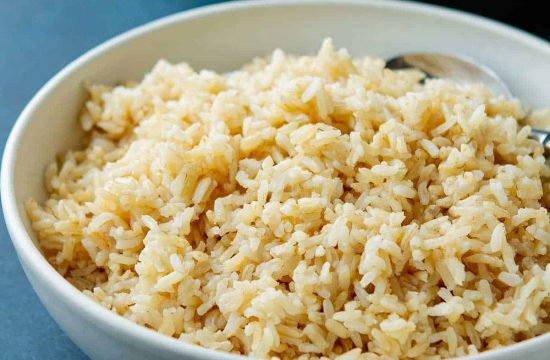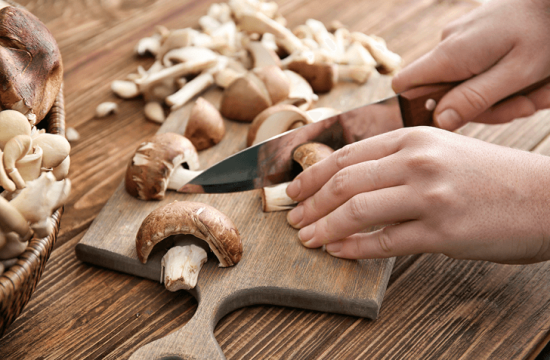Article by Dr Manasa S, B.A.M.S
Bone mineral density test is done to evaluate the health of the bones. It measures how much calcium and other minerals are present in the bones. Healthcare providers use this test to determine the risk of fracture of bones. Bone formation and destruction is a continuous process through out the life. As the age progresses, the rate of destruction may be higher than rate of formation of bone tissues. This tends to decrease the density of bones and makes the bones porous, brittle and weak leading to osteoporosis.
Let us first understand the basic structure and function of the normal bone tissue.
Brief knowledge about bone tissue
Bone tissue serves a dual role in the body, offering both structural support and facilitating movement. Beyond providing a physical framework, bones contribute to locomotion by serving as attachment points for muscles, tendons, and ligaments. These essential functions extend to protecting vital organs, supporting breathing, aiding in homeostasis, and housing marrow cells crucial for survival. Notably, bone tissue possesses the remarkable ability to regenerate, returning to a fully functional state post-injury.
Functionally, bone is a metabolically active connective tissue, comprised of an extracellular matrix and specialized cells called osteocytes. Under optimal conditions, the mineralization process occurs, resulting in the hardening of bone through deposited calcium. This hardness is integral to the various responsibilities the bones play in the body.
In the adult human body, there are 206 bones, a number that decreases from approximately 270 at birth. This reduction is due to the fusion of certain bones during phases of skeletal growth and maturation. Throughout life, bones undergo constant remodelling, with the majority of the adult skeleton being replaced roughly every 10 years.
Bone cells
Bone cells constitute about 10% of the total volume of bone. Bones are not static tissue and they need to be maintained and remodelled to keep itself healthy and strong. There are three main cells which are involved in the process of growth, repair and breakdown of old bone tissues, namely the osteoblasts, the osteocytes and osteoclasts. Osteoblasts and osteoclasts are integral cells in the human body responsible for promoting bone growth and facilitating the remodelling process to maintain bone strength. While the common notion is that bone growth occurs primarily in children and teenagers, the roles of osteoblasts and osteoclasts extend to supporting bone health even after reaching adulthood. These cells collaborate in forming new bone cells and breaking down old or damaged bone tissue.
Osteoblasts
Bone marrow stem cells differentiate into osteoblasts. Osteoid is a protein mixture produced by osteoblasts which gets mineralised to form bones. Osteoblasts are similar to construction crews, contributing to bone formation, remodelling, and healing of damaged or broken bones. Osteoblasts initiate their functions in response to chemical reactions or hormonal signals associated with bone growth or changes. They release a mix of proteins called bone matrix, consisting of collagen, calcium, phosphate, and other minerals. After the activation, the osteoblasts move into place and then deposit bone matrix in areas on a bone that needs to grow or to be strengthened or even repaired. This matrix solidifies and transforms into new, healthy bone, analogous to a construction worker laying down concrete for a new sidewalk or repairing existing paths. After completing their role in bone tissue formation, osteoblasts can either transform into osteocytes or undergo programmed cell death.
Osteocytes
Osteocytes, acting as a bone security system, monitor changes in pressure and stress within bones and they are responsible for sending messages to osteoclasts and osteoblasts to repair the broken or damaged bone tissue. They respond to various stimuli, ranging from normal movement to intense events like injuries, by signalling osteoclasts to dissolve damaged tissue and osteoblasts to deposit new bone tissue for healing.
Osteoclasts
Osteoclasts are large cells with more than one nucleus. Osteoclasts function as a demolition crew, dissolving and breaking down old or damaged bone cells by a process called as resorption. They create space for osteoblasts to generate new bone tissue in areas requiring growth or repair. The controlled and specific nature of osteoclast activity ensures the targeted breakdown of old tissue, triggered by signals from osteocytes.
Functions of bone tissue
Mechanical Functions:
1. Structure:
– Bones provide the framework for the body.
– Without bones, the body would lack a structural foundation.
2. Protection:
– Bones play a vital role in protecting delicate organs like the heart and brain.
– The skull, for instance, provides protection to the brain.
3. Movement:
– Collaboration of bones with joints, ligaments, tendons, and muscles enables body movement.
4. Sound Transduction:
– Bones conduct vibrations, contributing to the sense of hearing.
– Important for the auditory function.
Metabolic Functions of bone:
1. Mineral Storage:
– Bone matrix stores minerals, including calcium, phosphorus, and iron (ferritin).
2. Chondroitin Sulfate:
– Matrices contain chondroitin sulfate, a carbohydrate element.
3. Growth Factors:
– Specific growth factors like insulin-like growth factor (IGF-1) are stored in bones.
– Released periodically to support growth.
4. pH Regulation:
– Bones contribute to pH balance by modifying alkaline salt composition in the serum.
5. Detoxification:
– Osteocytes in bones can engulf toxic molecules and heavy metals for detoxification.
6. Fat Storage:
– Bones serve as storage for fats, adding to their metabolic functionality.
Bone remodelling process
Bone remodelling is a dynamic and continuous process that occurs throughout an individual’s lifespan, challenging the conventional notion of bones as inert structures within the human body. This intricate process is crucial for maintaining the structural integrity of the skeletal system and contributing to the metabolic balance of calcium and phosphorus within the body. Remodelling helps in the resorption of the old or damaged bone, and followed by the deposition of new bone material.
The frontliners in this process of remodelling are two primary cell types: osteoclasts and osteoblasts, with osteocytes also playing a significant role. Osteoclasts are responsible for resorbing old or damaged bone, while osteoblasts contribute to bone growth by depositing new collagen and minerals. Osteocytes, the most abundant cell type in mature bone, act as conductors, transmitting signals regarding bone stress and regulating fluid flow within the bone.
The bone remodelling cycle initiates early in foetal life, coordinated by the interaction between osteoblasts and osteoclasts. This results in the formation of multinucleated osteoclastic cells, which attach to bone surfaces and commence the resorption process, leaving characteristic “scooped out” regions of the bone matrix known as Howship lacunae. Subsequently, osteoblasts fill these lacunae with new collagen and minerals. Osteoblasts, in their differentiated state, may then become bone-lining cells, osteocytes, or undergo cell death [apoptosis].
The fundamental function of bone remodelling extends beyond mere adaptation to mechanical loading; it also serves to repair microdamage within the bone matrix, preventing the accumulation of old bone. Additionally, bone remodelling plays a pivotal role in maintaining plasma calcium homeostasis.
Hormones intricately regulate the bone remodelling process, with notable influences including parathyroid hormone (PTH), oestrogen, calcitonin, growth hormone (GH), glucocorticoids, and thyroid hormones. PTH, for example, raises blood calcium levels by affecting osteoclast activity, while oestrogen deficiency leads to increased bone remodelling. Calcitonin inhibits bone resorption in response to elevated calcium levels, and GH stimulates both bone formation and resorption through insulin-like growth factors. Glucocorticoids, on the other hand, decrease bone formation and favour osteoclast survival. Thyroid hormones influence bone turnover, with hypothyroidism and hyperthyroidism affecting osteoblastic and osteoclastic activity.
Clinical Significance of bone tissue
Bone tissue is susceptible to a myriad of pathologies with origins ranging from embryological, metabolic, autoimmune, neoplastic, to idiopathic. The conditions discussed below represent some of these diverse bone-related issues.
Achondroplasia, a genetic disorder associated with dwarfism, results in individuals presenting with short extremities due to reduced development of endochondral bone.
Paget disease of the bone is characterized by an imbalance in the activities of osteoblasts and osteoclasts. While its aetiology remains unknown, this condition predominantly affects localized portions of the skeletal tissue, typically involving one or more neighbouring bones rather than the entire skeletal system. Left untreated, Paget disease of the bone can act as a risk factor for osteosarcoma, a malignant proliferation of osteoblasts.
Skeletal neoplasms originate in the metaphysis of long bones. Patients may experience bone pain, swelling, or pathologic fractures, which are breaks caused by bone weakness due to disease rather than trauma. This phenomenon is more prevalent in teenagers compared to the elderly.
Bone fractures are a common occurrence, with osteoporosis being a disorder of bone remodelling characterized by low bone mass and structural deterioration. This condition leads to increased bone fragility and susceptibility to fractures.
Osteoarthritis, osteomalacia, rickets, and epiphyseal plate disorders are additional pathologies that affect bone health.
Why is BMD test performed?
Understanding the health of the bone is essential for effective treatment, and management of patients with bone disorders. Healthcare professionals perform BMD test to understand the following –
Evaluate the risk of bone fractures
Diagnose osteoporosis
Understand about the progress of osteoporosis treatment.
Other names for BMD test
- Bone density test
- Bone densitometry
- DEXA scan
- DXA
- Dual-energy x-ray absorptiometry
- p-DEXA
- Osteoporosis-BMD
- Dual x-ray absorptiometry
Who should opt for BMD test?
Men or people assigned male at birth who are older than 70 years.
Women or people assigned female at birth who are older than 65 years.
People younger than 65 years with a greater risk of bone fractures.
Healthcare workers advice BMD test if they find any of the following:
- Past history of fracture after the age of 50
- History of treatment for prostate cancer or breast cancer
- Significant drop in hormone levels
- On certain medications such as steroids for long duration of time
- Observed 1.5 inches [3.8 centimeters] reduction in the height.
- Low body weight or low body mass index
What are the reasons for high risk of bone fractures?
- Premature and early menopause
- Strong family history of osteoporosis
- Certain kidney disorders
- Rheumatoid arthritis
- Eating disorders that leads to low body weight
- Sedentary life style
- Smoking or excessive consumption of alcohol
Who are not eligible for BMD test?
Pregnant women or thought to be pregnant
People who had a barium enema
Recently administered contrast injection for a CT scan
Procedure of BMD test
How to prepare for BMD test?
No big preparation is needed for BMD test as it is easy, simple and fast
Healthcare professional should be informed beforehand about recent barium exam or about contrast material injection for a CT scan or nuclear medicine test
Calcium supplements should be stopped at least 24 hours before the test
Loose and comfortable clothing should be opted
Wearing clothes with zipper, belts or buttons should be avoided
No jewellery should be worn or any metal objects should be kept in pockets
Should be cooperative to wear examination gown if that is the protocol of the health care centre
How is the test performed?
BMD test is done by using x-rays to measure the amount of calcium and other minerals in the bones. The most common and accurate way to assess bone density is called as dual-energy x-ray absorptiometry, popularly known as DEXA scan. It is usually performed in radiology centre. There are two types of DEXA scan. They are as under –
- Central DEXA scan – Central scan looks at density of spine and hip bones
- Peripheral DEXA scan – This measures density at wrist, finger, and heal.
Central DEXA scan
Person is made to lie on a padded table with legs straight, resting the legs on a padded platform
A technician keeps an x-ray machine below the person and another device called as detector is placed above.
The technician goes to x-ray room to activate x-rays
The detector slowly passes over the spine and hips and takes the images. Technician may ask the person to move the legs or feet in different directions to get images from various areas. A person might have to hold the breath for few seconds to prevent movement that could lead to blurred images.
Generally, it takes 10 to 30 minutes to go around the test.
The images from both the machines combinedly are sent to computer.
Images are viewed by the healthcare professional and test results are analysed.
Peripheral DEXA scan
Peripheral DEXA scan is used to measure the bone density in forearm, fingers, hand, or foot. Here the healthcare provider uses a portable scanner for density assessment.
Understanding of the results of Bone Density Assessment
Bone density test outcomes are presented through two key metrics: T-score and Z-score.
T-score
The T-score is a measure of bone density relative to the expected norm for a healthy young adult of that particular gender. It quantifies the number of units, known as standard deviations, by which bone density deviates from the average.
– T-score between -1 and above: It is understood as bone density within the normal range.
– T-score between -1 and -2.5: This indicates osteopenia, signifying that bone density is below normal and may pose a risk for osteoporosis.
– T-score of -2.5 and below: This score of bone density suggests a likelihood of osteoporosis.
Z-score
The Z-score measures the standard deviations by which your bone density differs from what is expected for someone of your age, gender, weight, and ethnic or racial background. If your Z-score significantly deviates from the average, further tests may be necessary to pinpoint the underlying cause of the issue.
These scores collectively provide a comprehensive overview of bone health, aiding in the identification of potential concerns and guiding appropriate follow-up measures.
Ayurveda and Reduced BMD
Ayurveda has very good medicines and remedies for those having reduced BMD or in whom osteopenia has already set in. Therapies like Tikta Ksheera Basti, disease modifying herbal formulations, food and lifestyle modifications so as to control the aggravated vata and strengthen the bones and joints will not only help in easing the symptoms but also will arrest the progression of the disease. Ayurveda medicines and treatments will also provide good relief in symptoms related to osteoporosis.
Related Reading – Low Bone Density / Osteopenia
Also read – ‘Ayurveda markers and tools to evaluate BMD’















